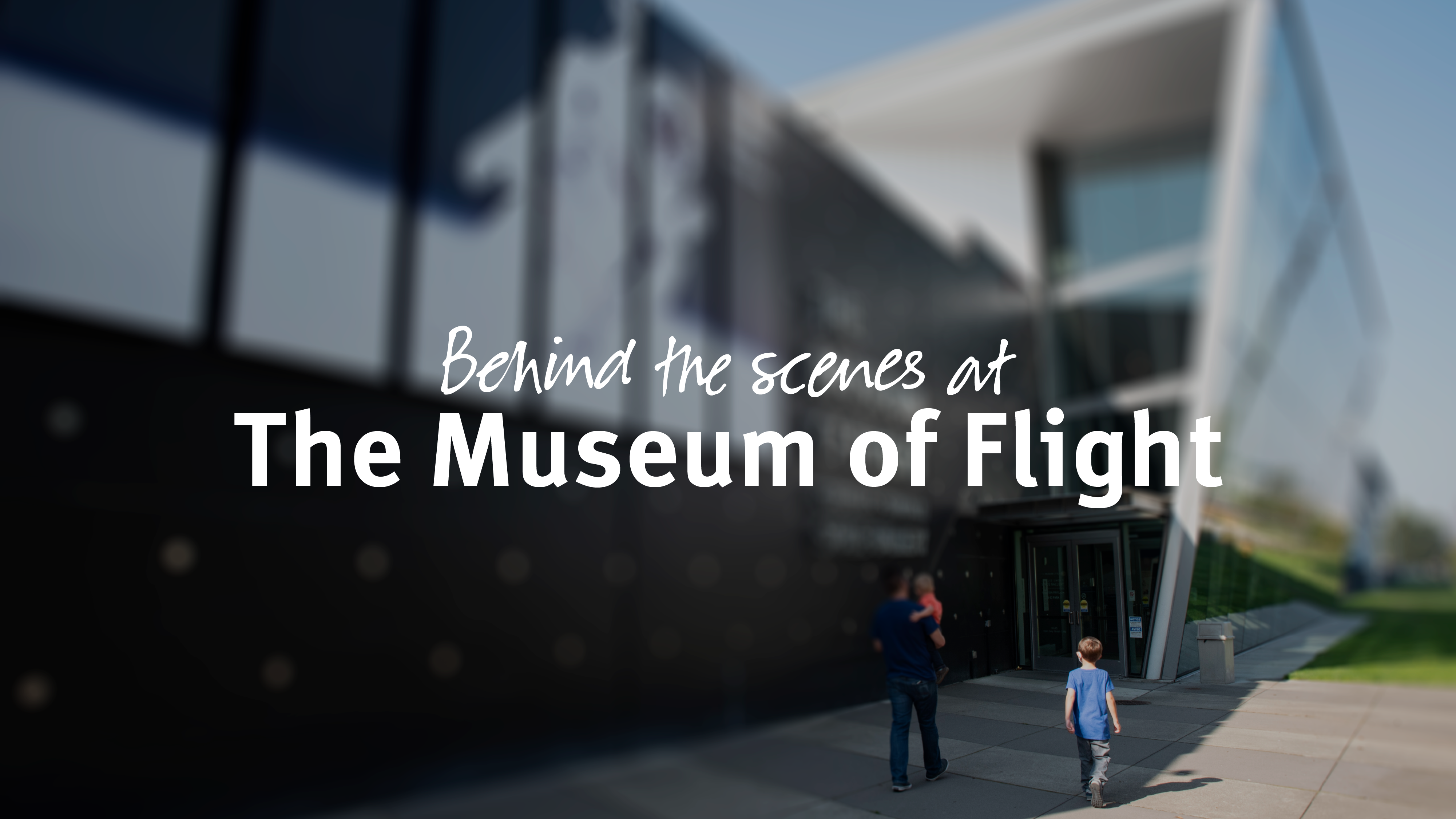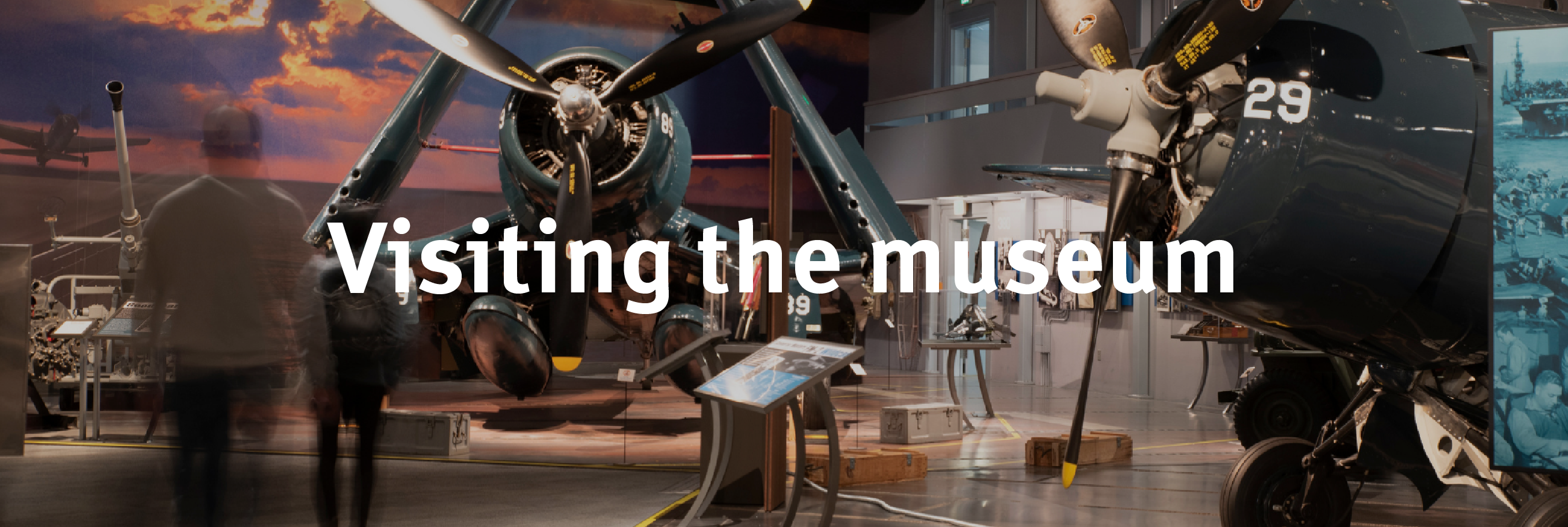
The Museum of Flight first opened its doors in 1983 next to Tukwila’s historic Boeing Field — home to the first ever airplane flight in the Seattle area and the perfect setting for an aerospace museum. Over the next 40 years, it grew to become one of the most notable air and space museums in the world. Its collection of aircraft and spacecraft is one of the largest in the world, and its archive of books, artifacts, photos, and other printed materials puts it into a class on par with the Smithsonian’s National Air & Space Museum.
With over 600,000 visitors per year, The Museum of Flight is a top destination for tourists and Seattle locals alike.
This month, we sat down with The Museum of Flight Senior Manager Ted Huetter to give us the inside scoop on what to look out for when visiting and tell us a little more about the museum’s role in the community.

If a first-time visitor had only two hours to spend at the museum, what would you recommend they prioritize?
Ted Huetter: The Great Gallery is a fantastic look at the first 100 years of aviation, from early mail planes to the Blackbird spy plane to jets from the Vietnam War era. The Apollo exhibit next to it has relics from the 1960s Space Race to the Moon you won’t see anywhere else, like the first Apollo command module spacecraft, and rocket motors that launched Apollo 12 and 16. If you’re in a time crunch this area is a must see and provides a great overview of aerospace history.
What would you say is the most underrated feature or artifact in the museum that visitors might overlook?
Sometimes it’s the little things that get overlooked among the huge objects here. One of my favorites is a very special gift from the Apollo 1 astronauts to the astronaut director, Deke Slayton. The Apollo 1 astronauts were tragically killed in training exercise, so it was their widows that gave Slayton the pin. He treasured it and always wore it after that. When he died decades later, his widow gave it to the Museum because her friend Neil Armstrong thought it would be the best place for it.
The “Home Beyond Earth” exhibit recently opened in June. Can you tell us a bit about why the history of space stations was something the museum wanted to explore?
We are very proud that this exhibit was developed almost entirely in-house, including the interactive elements that kids love so much. Humankind is beginning another new space age that will include many people who could not have gone to space before. This exhibit is very timely and lets people learn about the exciting possibilities that lay ahead for them. For more on the “Home Beyond Earth” exhibit visit: https://homebeyondearth.museumofflight.org/

Creating community is also at the core of The Museum of Flight’s mission. How does the museum engage with the local community?
The subject of flight is universal, so we take the spirit of flight into the community at local festivals and other events. We have our own festivals, both free and included with Museum admission, that offer engagement for a great range of interests, including art, science, history, and more. Tukwila staff and other community organizations often have a big presence at these events.
The Museum also provides free access for community film, photoshoots, and other art projects, and actively engages with local communities and organizations via social media.
When did the Boeing Academy for STEM Learning program start? How has this program grown and evolved over time?
Education has been part of the Museum’s mission since the beginning, over 50 years ago. The Boeing Academy is a more recent umbrella for this work and has grown to be the largest education office of any aerospace museum. We offer on-site and remote programs, college credit courses, flight instruction and university scholarships, plus dozens of programs for K-12 students, all aimed at inspiring the next generation of scientists, engineers, historians, and aviation enthusiasts.
The Museum of Flight is an incredible event venue, hosting events like fashion shows, the Seattle Symphony, craft beer tastings, etc. What’s the most unusual event you’ve had here? What are the most beloved events year-after-year that the museum hosts?
Our Art After Dark burlesque event might have been the most unusual for an aerospace museum, but the theme of flight was a part of it, and we reached many people who might not normally visit the Museum.
Yuri’s Night is a very special annual event. It celebrates human spaceflight and how space brings everyone together. There are Yuri’s Night celebrations around the world every April, and ours has grown to be the largest. During the day we offer Yuri’s Day, which is for a younger audience, and this year we offered a DJ’d dance party engaging the deaf and hard of hearing community with Puget Sound’s first use of cutting-edge haptic gear so all attendees could fully experience live dance music.
_________________________
For many, The Museum of Flight is not a one-time visit. With new major exhibits every year, and new public programs and family events almost every weekend, there’s reasons to come back again and again. So whether you’re a first time visitor, a regular, a parent of curious minds, or a curious mind yourself, there’s a place for you here.
You can check out general admission tickets and pricing, or consider becoming a member.
There’s also many ways for individuals and families to visit the Museum for free or heavily discounted rates, including monthly free first Thursdays from 5-9pm for the public. For more ways to enjoy the Museum for free or at low cost, visit https://www.museumofflight.org/Visit/Access.
